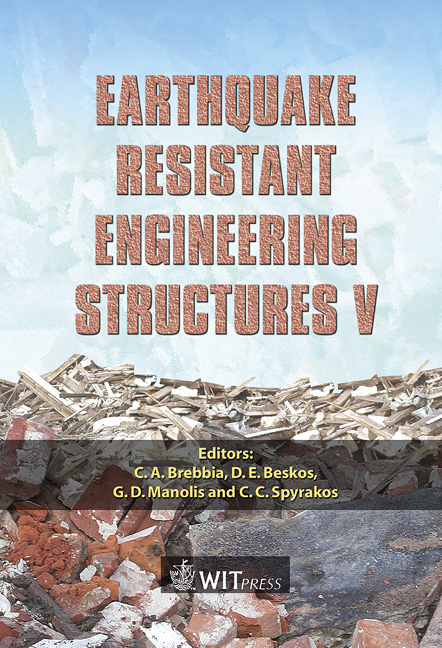Seismic Analysis And Retrofit Of A Historic Masonry Building
Price
Free (open access)
Transaction
Volume
81
Pages
9
Published
2005
Size
2,813 kb
Paper DOI
10.2495/ERES050491
Copyright
WIT Press
Author(s)
C. C. Spyrakos, P. Touliatos, D. Patsilivas, G. Pelekis, A. Xampesis & Ch. A. Maniatakis
Abstract
This study presents the seismic analysis of a three-storey unreinforced masonry building that was heavily damaged during the Aigion 1995 earthquake. The building is located a few kilometers from the fault, thus subjected to \“near field” ground motions. Seismic analysis of the building, using an elaborate finite element model with properties extracted from material testing of representative structural members and excitation from records obtained from a nearby station, revealed the mechanism of partial failure of the top floor as well as the weaknesses of the original building design and construction. Alternative retrofit and strengthening techniques that can be implemented while maintaining the architectural and aesthetical appearance of the historic building are presented. Keywords: seismic analysis, retrofit of masonry building, near-field seismic motion. 1 Introduction The city of Aegio has suffered several strong earthquakes through the years. The most recent powerful earthquake which caused human losses occurred on June 15, 1995. It was an 6.4 Ms shallow depth earthquake with an epicentral distance of about 18 kilometers southwest of Aegio that caused the death of 26 people, massive, and in many cases, irreparable, damages to both modern and older (masonry) buildings [1]. In 1997 a weaker earthquake caused additional damage on already deteriorated buildings.
Keywords
seismic analysis, retrofit of masonry building, near-field seismic motion.





